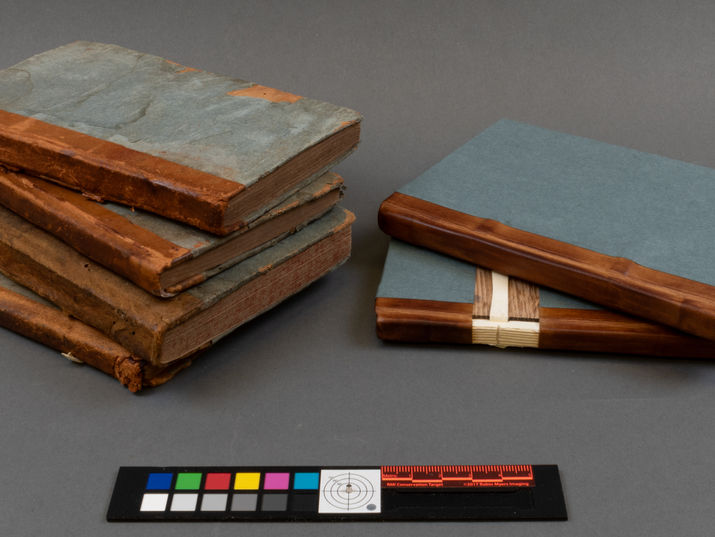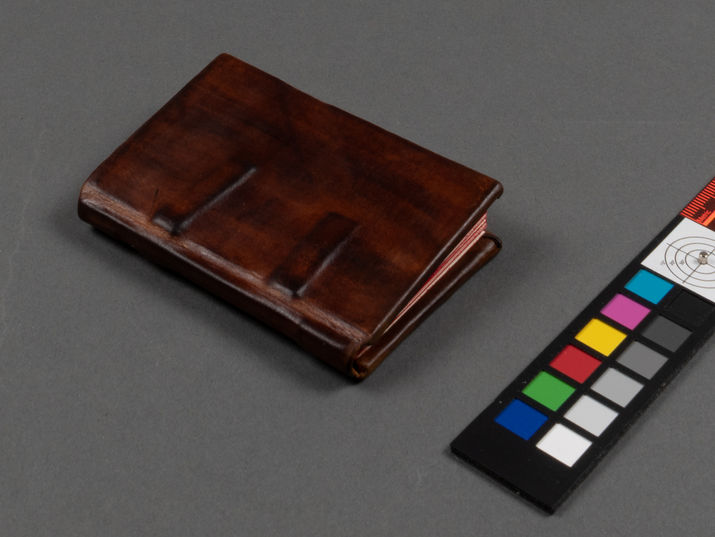Scaleboard Binding
A variety of terms have been used to refer to bindings with thin, wooden covers including scabbard, scaleboard, scabard, scaberd, scabboard, sca’board, and scale-board. They were particularly common in 17th and 18th century colonial American bindings. The practice of using very thin wooden boards in place of binders’ boards was brought over to Colonial America by European immigrant bookbinders as paper and paper-based products were more expensive than using local wood for covers. The use of thick wooden boards had dropped significantly in Europe by the 1600s, but thin boards were still being used in lieu of paper boards.
Scaleboards were often used for sermons, music, capture narrative, schoolbooks, literary, and other small format books. They were used in America well into the 19th century--long after paper boards became cheaply and readily available.
These models were inspired after compiling an annotated bibliography of scaleboard research and from examining the University of Iowa's known collection of scaleboard bindings.
Key Features (exceptions apply)
-
Thin (1-3 mm), wooden boards with grain typically running horizontally--vertically grained boards were more typical for European scaleboards
-
Single or double bifolia endpapers usually made of plain paper
-
Most commonly were stab sewn with alum tawed leather thongs parallel to the spine and adhered to the outside of the boards. Fabric or twill thongs are also noted.
-
Could also be sewn on recessed (or sometimes raised) cords adhered to inside of the boards
-
Saw marks for sewing are still often present regardless if book was sewn or stabbed
-
Spine is flat or slightly rounded
-
Usually no endbands
-
No spine linings
-
Full leather tightback bindings were most common, but quarter leather and full paper were also very typical. Cloth bindings are also typical.
-
Leather was usually sheep or sometimes calf
-
Leather was often stained dark brown and blind-tooled with simple panel decorations



